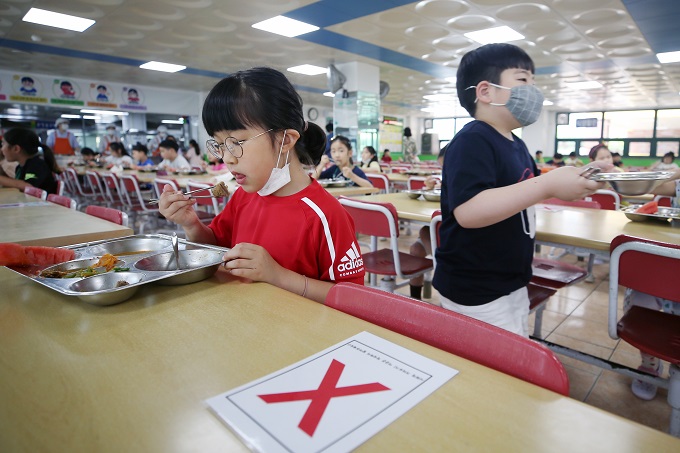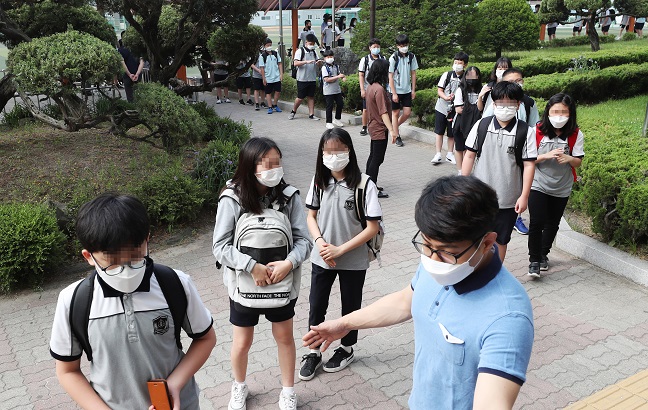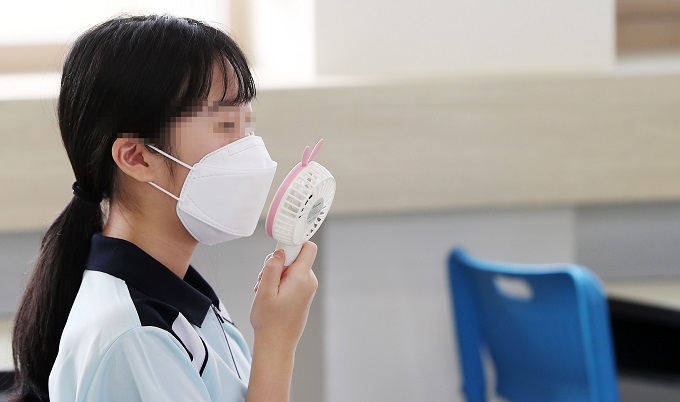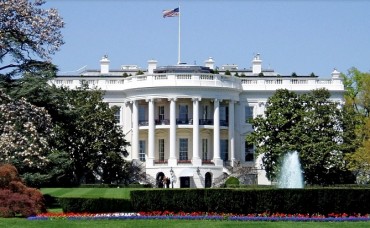
A student eats her lunch with the seat next to her left empty at an elementary school in Gwangju on June 8, 2020. (Yonhap)
SEOUL, June 8 (Korea Bizwire) — With the final batch of students returning to classes Monday, South Korea completed its phased school reopening scheme despite growing anxiety over a second wave of new coronavirus infections in Seoul and adjacent cities.
About 1.35 million more students — in the first grade of middle school and the fifth and sixth grades of elementary school — went back to their classrooms in the final round of the government’s four-phased reopening plan, which started with high school seniors on May 20.
This put all the 5.95 million students below the higher education level back at school, plus preschoolers, more than three months after the start of school was put on hold due to the new coronavirus pandemic.
But only one-third or two-thirds of them were expected to actually attend classes, with schools set to mix schedules for in-person classes and remote learning due to limited space for keeping a distance among students.
South Korea began reopening schools weeks after the country switched its social distancing campaign to what it calls an “everyday life quarantine” scheme aimed at helping the people slowly return to life under eased rules.
The complete resumption of classes came against the backdrop of persisting virus concerns in the greater Seoul area.
On Monday, South Korea reported 38 new virus cases, bringing its total caseload to 11,814, according to the Korea Centers for Disease Control and Prevention (KCDC).
The daily figure dropped after topping 50 for two consecutive days, raising concerns over a second wave of infections in the area.
Of the 38 new cases, 33 were local transmissions, all in the capital area where cluster infections traced to religious gatherings, nightclubs, a distribution center and a door-to-door business entity have stoked alarm.

Students maintain a distance from one another after arriving at Chuncheon Middle School in Chuncheon, Gangwon Province, on June 8, 2020, amid the coronavirus pandemic.(Yonhap)
Even as the school resumption completed, 14 schools in Jungnang Ward in eastern Seoul were forced to resume remote learning after a high school student in the area tested positive for the virus after visiting Lotte World Adventure, an amusement park in the city, according to the Seoul Metropolitan Office of Education.
Virus tests for all the 679 students and around 90 faculty members of the troubled school are under way. So far, 51 people, including 38 students, have tested negative. The 14 closed schools will reopen through the next three days.
During a briefing Monday, Education Minister Yoo Eun-hae provided reassurance about the government’s pandemic preparedness.
“Since the reopening of schools started, there has been no secondary transmission reported at schools,” she said, emphasizing the importance of a “preemptive” and “swift” response to a potential outbreak through extensive testing and rescheduling of in-person classes.
Fortunately, schools seem to be less affected by COVID-19 than expected.
Data from the education ministry released Monday showed that only a dozen infections have been reported at schools — eight students and four school officials — since schools began to reopen.
The ministry said none of them contracted the virus at school. They either found out they had been infected with the virus only after coming to school, or they showed COVID-19 symptoms at school and subsequently tested positive.
The bigger concern seems to come from outside of school boundaries, according to state data.
While schools shut down for nearly three months to limit the spread of the novel coronavirus, the country’s private educational institutes, such as cram schools, or “hagwon” in Korean, largely stayed open despite the government’s repeated warnings against it.
According to the ministry, 78 COVID-19 patients have been confirmed at 42 private institutes since February. Some of them were found to have lax quarantine measures in place, putting young students and teachers there at risk.
That the country continues to see small infection clusters in the capital area is also raising a red flag for the potential spread at schools.

A student cools herself with a hand-held fan inside a classroom in Chuncheon, Gangwon Province, on June 8, 2020. (Yonhap)
To prevent an outbreak at schools, the ministry has allowed each school to run a different — sometimes rather complex — schedule designed to maintain social distancing.
They have implemented staggered lunches, adjustments to student attendance, split sessions, reduced class time and a mix of online and offline classes.
As of 10 a.m. Monday, 517 schools, or 2.5 percent of the country’s 20,902, closed as a precautionary measure.
The figure was 838 on May 28, a day after schools reopened for more than 2.3 million pupils in the second phase of reopening. All but four of the 517 schools are located in the capital area.
The government recognizes parental concerns over safety in hagwon and has moved to tighten its grip.
It plans to revise a relevant law, based on which the education ministry can punish a private academy that fails to abide by strict quarantine measures with a fine or a forcible business closure.
It is also mulling introducing quick response (QR) code-based entry logs there to allow easy tracing of potential COVID-19 patients. It has already been running the pilot program at risky venues, including karaoke facilities, bars and churches.
“We are all aware of how parents and teachers are concerned (about potential outbreaks at school),” Minister Yoo said.
“The government’s response system runs 24-7 to handle any emergency swiftly. Education offices, schools and health authorities, connected through hotlines, work closely for a fast response.”
But she acknowledged the need to remain cautious, saying, “Although we have wrapped up the reopening plan, we shouldn’t let a single slipup happen when it comes to preventing the virus from spreading at schools.”
(Yonhap)






